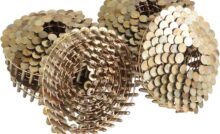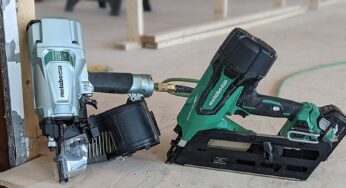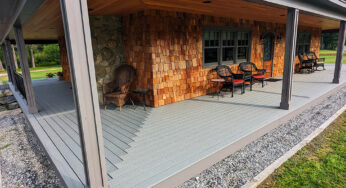Erecting Large Trusses Safely
Today at work my crew was starting the process of erecting 68 foot long prefabricated wood trusses. These trusses are not the largest possible but they certainly are on the larger side of things. This morning before the crew began I gathered everyone up to remind them the dangers of setting trusses and the importance of taking it slow and safe! Last night I had a hard time sleeping because I kept thinking about today’s big truss set.
Well I must have known something was going to go wrong because it did. After we set the first gable end truss we picked up the first common truss. When the truss got about 3 feet off the ground it basically folded in two like a piece of paper and snapped apart like a cracker! Luckily everyone was paying attention and standing at a safe distance like we talked about in our safety meeting and no one was injured.
The solution to this problem was two fold. My experience as an engineer lifting heavy steel girders helped me make some good field adjustments for the lifting. We went out and got a 14 foot long spreader bar so we could pick the truss up from 3 points and get the pick points our farther from the center. We also ended up adding some 2×6 stiff backs to the bottom chord to stiffen the truss and prevent it from folding in half.
The point of my post is two fold. One is when you work with large trusses you need to be extremely careful and two taking your time and planning things out can make a huge difference. Today we only got about 1/4 of the trusses set that I planned on, however, now that things are set up and we can safely lift the trusses things will go better tomorrow. As I told my crew this morning, the plan is for every person on the team to go home to their family at the end of the day. Most accidents can be avoided by slowing down, taking your time and being careful.
Next time you work with large trusses please take your time and be careful.
Recent Posts
Framing Stick Nailer vs Coil Nailer
Which is Better a Stick Nailer or Coil Nailer? Framers have many choices in nailers…
How Many Roofing Nails Per Square of Shingles
Estimating How Many Nails for a New Roof When it comes to estimating materials for…
Composite / PVC Decking – Layout Tips & Advice
Composite / PVC Decking Layout Tips and Advice Composite and PVC decking have really changed…
Benefits of an ERV System (Energy Recovery Ventilator)
Benefits of ERV Systems (Energy Recovery Ventilator) If you're building a new home or doing…
Vermiculite Attic Insulation Abatement
Vermiculite Attic Insulation If your home was built before 1990 there is a chance it…
Nuisance Tripping of AFCI (Arc Fault) Circuit Breakers
Arc Fault (AFCI) Circuit Breakers Tripping Often An arc-fault circuit interrupter (AFCI) or arc-fault detection…





View Comments
Engineered wood trusses get most of their bracing from applied sheathing. This is readily observable on any shop drawing under the category "bracing". Good thought process on the spreader bar. It is an absolute necessity. Getting a truss that long on the roof is half the problem. Dominoing of improperly braced trusses is equally important. Two things I must point out. 1) Have the roof sheathing onsite and apply at least two to three row for every four trusses erected, do not wait to set all the trusses without doing this. 2) There is no recommended bracing for any truss approved by the governing agencies for a span greater than 60'-0". This mean a structural engineer must be consulted for temporary and perminant bracing over 60'-0"